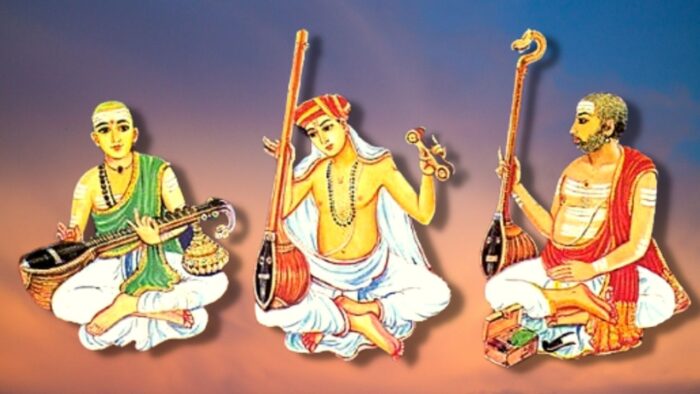Carnatic Music and Its Global Influence
Carnatic music, The Melodious Heart of South India, is one of India’s classical music traditions that have captivated listeners for centuries. This art form has evolved for centuries, preserving ancient musical concepts while continually adapting to contemporary tastes.
Origins and Development
Carnatic music traces back to ancient Vedic traditions, particularly the Samaveda. During the Vijayanagara Empire, the genre flourished significantly, with Saint Sri Purandara Dasa, known as the “Father of Carnatic Music,” developing its foundational lessons. The legendary trio of Carnatic music – Sri. Tyagaraja Swamy, Sri. Shyama Shastri, and Sri. Muthuswami Dikshitar – played a crucial role in shaping the genre’s ragas, talas, and expressive language.
Global Influence and Modern Adaptations
Carnatic music has transcended its traditional boundaries, making significant inroads into the global music scene and adapting to contemporary tastes. This expansion has led to innovative collaborations, fusion genres, and a broader appreciation for South Indian classical music worldwide.
Cross-Cultural Collaborations
Renowned Carnatic musicians have increasingly partnered with artists from diverse musical backgrounds:
Srimathi. Bombay Jayashri: A prominent Carnatic music singer sang and co-wrote the lyrics for “Pi’s Lullaby,” the film’s opening song “Life of Pi.”
She collaborated with famous composer Sri. Mychael Danna is on this song. “Pi’s Lullaby” earned a nomination for Best Original Song at the 85th Academy Awards.

Sri. L. Shankar: A pioneer in fusion music, he has worked with Western artists like Sri. Peter Gabriel and Sri. Frank Zappa incorporated Carnatic elements into rock and world music.
Shakti: This groundbreaking group featuring Carnatic violinist Sri L. Shankar and tabla maestro Sri. Zakir Hussain, alongside Western jazz guitarist Sri. John McLaughlin created a unique fusion of Carnatic, Hindustani, and jazz elements.
Fusion Genres
The integration of Carnatic music with other genres has given rise to innovative musical styles such as Carnatic Jazz, Electronic Carnatic, and Carnatic Rock.
Carnatic Jazz: Artists like Sri. Prasanna Ramaswamy has combined Carnatic ragas with jazz harmonies, creating a unique sound that appeals to traditional and contemporary audiences.
Electronic Carnatic: Musicians like Sri. Karsh Kale has incorporated Carnatic elements into electronic dance music, creating a modern, club-friendly sound with classical Indian roots.
Carnatic Rock: Bands like Agam have successfully fused Carnatic music with progressive rock, attracting younger audiences to traditional musical concepts
Global Outreach and Education
Carnatic music has found a place in academic and performance settings worldwide:
University Programs: Institutions like Berklee College of Music and the University of Washington offer courses in Carnatic music, promoting its study and practice globally.
International Festivals: Events like the Cleveland Thyagaraja Festival in the United States have become significant platforms for showcasing Carnatic music to global audiences.

Online Learning: The digital age has facilitated global access to Carnatic music education through online platforms and virtual concerts, expanding its reach.
This exemplifies how Carnatic music continues to evolve and influence the global music landscape. Carnatic music maintains its relevance while preserving its rich traditional core by embracing new technologies, collaborating across cultures, and adapting to contemporary tastes. This dynamic evolution ensures that the ancient art form remains vibrant and accessible to new generations of musicians and listeners worldwide.



